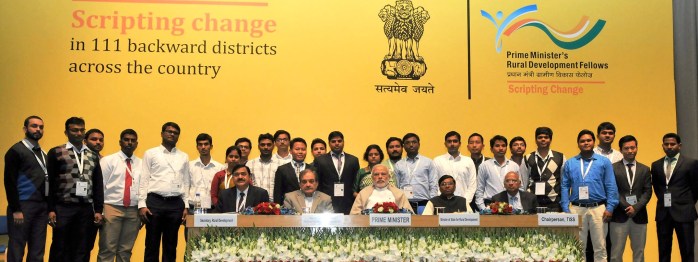India saw a long chain of efforts to eradicate open defecation. It is a shame that even after such sustained efforts around 60 crore people (>50% population) defecate in open. It is said that around a 1000 lives are lost every day because of diarrhea for which open defecation is a major reason.
With effect from 1 April 1999, the Government of India restructured the Comprehensive Rural Sanitation Programme and launched the Total Sanitation Campaign (TSC) which was later (on 1 April 2012) renamed Nirmal Bharat Abhiyan (NBA). Thousands of Nirmal Bharat Puruskar were distributed. Most of the Panchayats who received the award have regressed back to open defecation. In my city (Aurangabad, Bihar) – 56000 toilets have been constructed till now by PHED department under different schemes with an expenditure of 23 crore rupees.
On 2 October 2014, Prime Minister Narendra Modi launched the Swachh Bharat Mission, which aims to eradicate open defecation by 2019, thus restructuring the Nirmal Bharat Abhiyan. Truthfully, I was very skeptical about this programme for a long time. It is only very recently that I have started participating in the programme. And I can tell you that this is one of the best programmes to work in the development sector. It helps me work with the people at the ground level. Now, let me get down to some misconceptions which I had about this programme.
- I thought that people will not change their habits easily. However I found that people respond well to trigger when approached systematically. The CLTS approach is intended to provoke people to think about the harms they are doing to their children, especially their daughters by continuing to defecate in open. They are provoked by playing a kind of drama in the public. Public is asked to drink water from a bisleri bottle. They are then shown how flies sit on excreta and sits on water or food. Using a straw, tiny amount of excreta is mixed with water which is then offered to all. Obviously, no one drinks it. But they realise the point we want to convey. Most of the people get immediately ready to begin construction of the toilets in their homes.
- People have some land to construct toilets. They all have bathrooms in their homes where they take bath. A toilet can be constructed partitioning that space.
- People have water source within 10-20 meters in my district. Almost all women take bath at home for which they require at least 20 liters of water each. For other domestic requirements also, they need water in plenty. If they can fetch that much of water, they can surely take 2 mugs extra for use in toilet. It should be noticed that the rural toilet pans require only 2 mugs of water at the maximum including for self rinsing.
- There are always some motivated people who think for their village. They volunteer to become Vigilante committee members and go to the field every day morning to sound whistle at anyone seen defecating or going to do that. This causes great embarrassment to these people. People defecate in open because they know that every body else is doing that. When they realise that not many people are doing it they start feeling embarrassed.
- In SBA also, money is paid by the government after the toilet is constructed. So, many argue that people do not have the capacity to spend that much beforehand. Actually, people can do that easily or they get material on loan for a period of 10-15 days given that there is a surety of time payment by the government officials.
- The government officials are generally slow in processing the subsidy request but not in SBA where monitoring is tight and regular progress in disbursal is to be shown. We achieved disbursal to all 96 beneficiaries in one village in less than 15 days.
- There are simple techniques which have to be kept in mind to avoid a situation in which the constructed toilets remain unused. It happens also because of that facts that toilets are not friendly to be used in all weathers. I asked people to build toilets with clay tiles rather than tin sheets. This makes them air and smell free. Further, people were asked to leave small ventilation holes in all walls so as to make the toilets more usable. I asked people to make cheap doors using oil tins which costs them only Rs 60. This way they can save around Rs 1000 which also acts as a motivation for them. The two pit toilets can be easily constructed in less than 11,000 rupees.

Overall, we were successful in making 2 villages open defecation free in just 20-25 days. These villages are Parsa and Sinduriya in Rajpur Panchayat in Nabinagar block. I have visited these villages are regular intervals and found that the momentum is carried forward and the village is still OD free.
